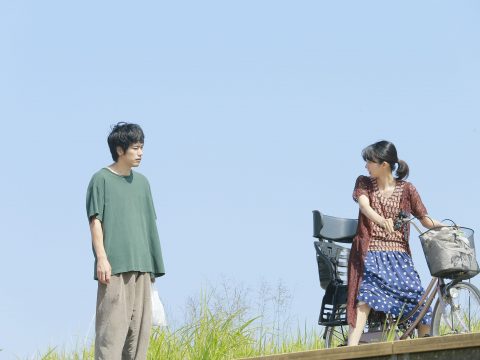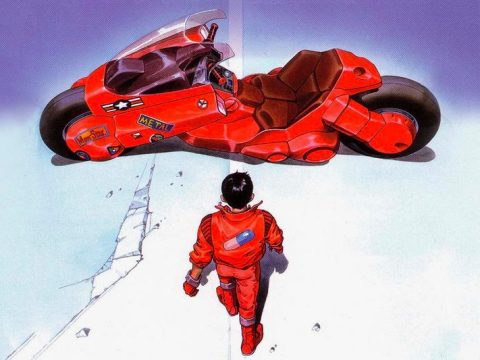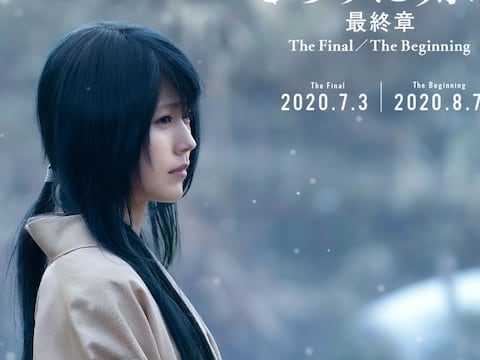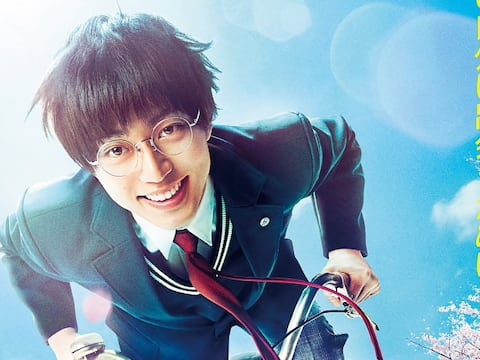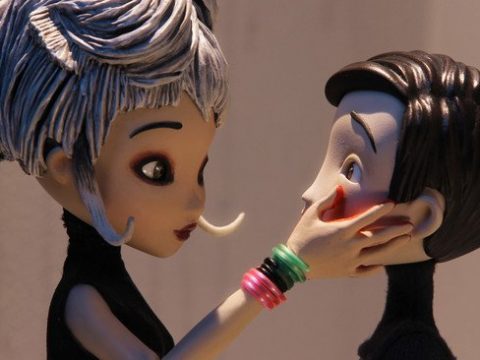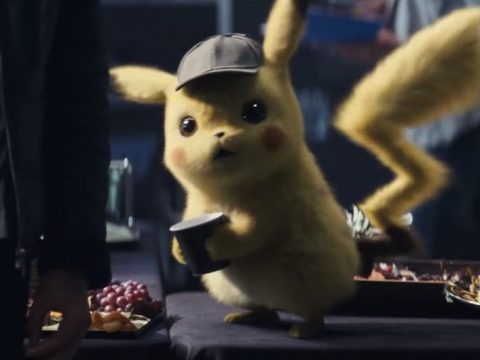Kinji Fukasaku’s original Graveyard of Honor (1975) is my favorite Japanese yakuza film ever made. Just as Fukasaku was, to me, Japan’s own Martin Scorsese, Graveyard of Honor is basically the Japanese equivalent of Raging Bull. Both are tragic and powerful films about a man’s downward spiral into horrific oblivion and both are based on the lives of real men. However, unlike the story of Jake LaMotta, Graveyard of Honor‘s story of raging mad yakuza Rikio Ishikawa was filmed twice: first by Kinji “Battle Royale” Fukasaku, the second time by a filmmaker whom many consider his heir: Takashi “Ichi the Killer” Miike.
 Fukasaku’s Graveyard of Honor opens in the aftermath of World War II, where a young, hotheaded yakuza named Rikio Ishikawa (played wonderfully by former Nikkatsu studios idol Tetsuya Watari) rises to power in the bombed-out slums of Tokyo. However, no sooner does his future seem made than the man’s self-destructive nature kicks in. He soon starts to lose his mind and his morals. After blowing up the car of a politician closely allied with Ishikawa’s clan, he gets in an argument with his godfather, eventually attacking and almost killing him. After spending some time in prison, his clan banishes him from Tokyo for a decade. Eventually he becomes a heroin junkie in Osaka. After just one year, he returns to Tokyo and shows up at a gambling ring run by his former ally Imai (Tatsuo Umemiya). Imai begs him to leave Tokyo, and what does Ishikawa do in response? He wounds his friend and eventually murders him a few days later, setting off a firestorm of violence.
Fukasaku’s Graveyard of Honor opens in the aftermath of World War II, where a young, hotheaded yakuza named Rikio Ishikawa (played wonderfully by former Nikkatsu studios idol Tetsuya Watari) rises to power in the bombed-out slums of Tokyo. However, no sooner does his future seem made than the man’s self-destructive nature kicks in. He soon starts to lose his mind and his morals. After blowing up the car of a politician closely allied with Ishikawa’s clan, he gets in an argument with his godfather, eventually attacking and almost killing him. After spending some time in prison, his clan banishes him from Tokyo for a decade. Eventually he becomes a heroin junkie in Osaka. After just one year, he returns to Tokyo and shows up at a gambling ring run by his former ally Imai (Tatsuo Umemiya). Imai begs him to leave Tokyo, and what does Ishikawa do in response? He wounds his friend and eventually murders him a few days later, setting off a firestorm of violence.
I really think Graveyard of Honor is Fukasaku’s finest yakuza film and could be, along with the likes of Battle Royale and Under the Flag of the Rising Sun, one of his best films in general. Fukasaku’s direction is superb. The camera moves restlessly; most of the film was shot with a hand-held camera through a wide-angle lens. The film is relentlessly violent and brutal and boasts one of the more shocking scenes in film history, a sequence in which Ishikawa pulls a Keith Richards and munches away on the bones and ashes of his dead wife in front of his former boss.
Now fast forward to 2002. Takashi Miike, a member of the next generation of Japanese filmmakers, came out with a Graveyard remake on the heels of Ichi the Killer and the immensely entertaining Happiness of the Katakuris. However, this Graveyard of Honor, while still boasting most of the same plot points, is actually considerably different. In a very Miike move, he chose to ditch the original’s very Fukasaku post-WWII setting and instead set in the film in a time period ranging from the early 80s to late 90s, a turbulent period with Japan’s economy first rising then drastically falling. While it’s not a masterpiece like Fukasaku’s version, it’s still a fine film.
 After saving the life of Boss Sawada, Rikuo Ishimatsu (Goro Kishitani) is inducted into the yakuza world. After doing some jail time for injuring a rival boss, his behavior becomes more and more erratic and violent. After a misunderstanding regarding his payment, he badly wounds his godfather and his ally Imamura (Ryosuke Miki). He soon becomes a heroin addict, and after he is sold out by one of Imamura’s men, he mistakenly believes that Imamura himself sold him out and thus wounds and eventually murders him.
After saving the life of Boss Sawada, Rikuo Ishimatsu (Goro Kishitani) is inducted into the yakuza world. After doing some jail time for injuring a rival boss, his behavior becomes more and more erratic and violent. After a misunderstanding regarding his payment, he badly wounds his godfather and his ally Imamura (Ryosuke Miki). He soon becomes a heroin addict, and after he is sold out by one of Imamura’s men, he mistakenly believes that Imamura himself sold him out and thus wounds and eventually murders him.
While I am not the biggest fan of Takashi Miike, I do think Graveyard of Honor is one of his better, more engaging films. The film actually delves deeper into the characters than Fukasaku’s version does, with Rikuo’s motives being a little clearer than Rikio’s in the original. Miike’s film also more deeply explores the horrifying effects of Rikuo’s heroin addiction. Goro Kishitani’s Rikuo Ishimatsu is a bit more rounded a character than Tetsuya Watari’s Rikio Ishikawa. He’s a grotesque beast whom you both loathe and pity at the same time, whereas Tetsuya Watari’s portrayal was a bit less sympathetic.
Miike’s Graveyard of Honor is also stunningly violent and grotesque. While Miike doesn’t linger on the horrors as much as he did in Audition or Ichi the Killer, the film is still certainly not for the squeamish or weak stomached, with blood splatter and gun shots at point-blank range, skulls caved in, heroin shooting, a touch of vomit, and a lot of general freakiness. Still, for all its glorious excess and grodiness, it still feels like it’s missing something present in Kinji Fukasaku’s 1975 original. Fukasaku’s film simply has a more timeless quality and perhaps more passion, but Miike’s version is certainly highly recommended as well. Try watching them both in one night!


